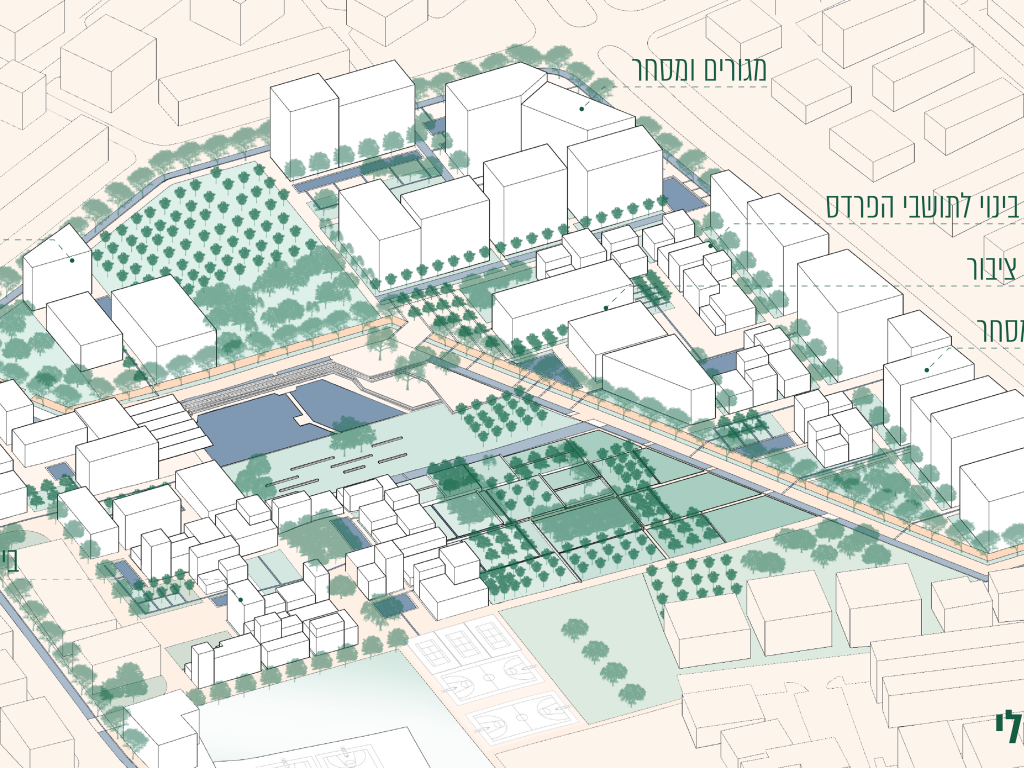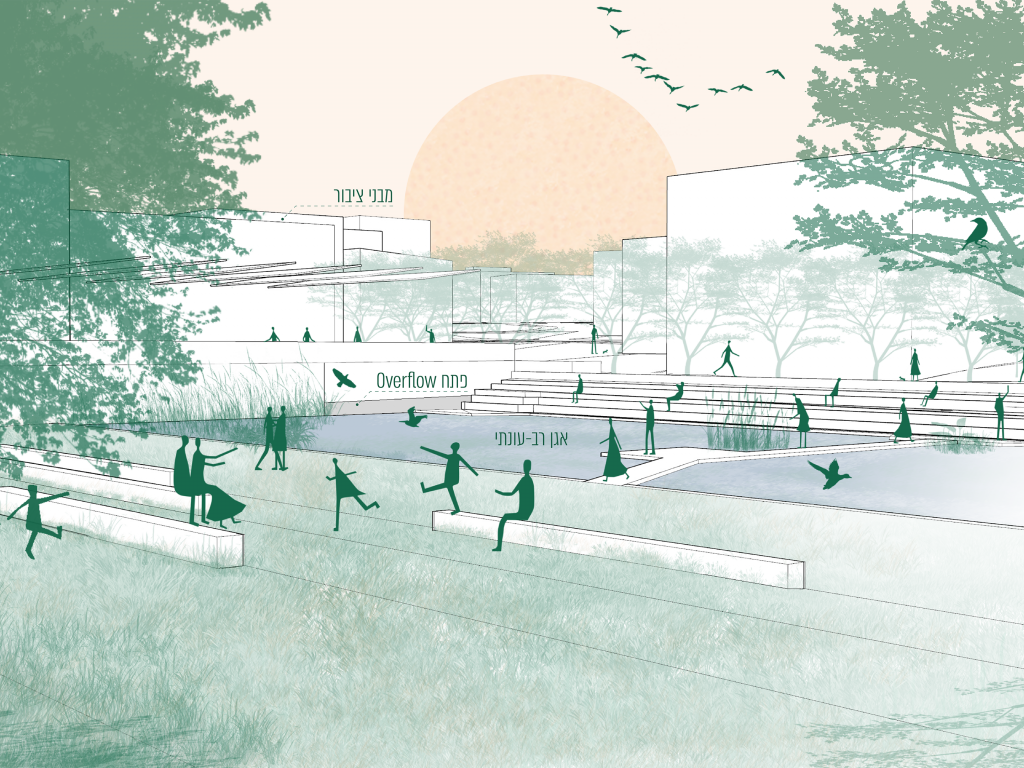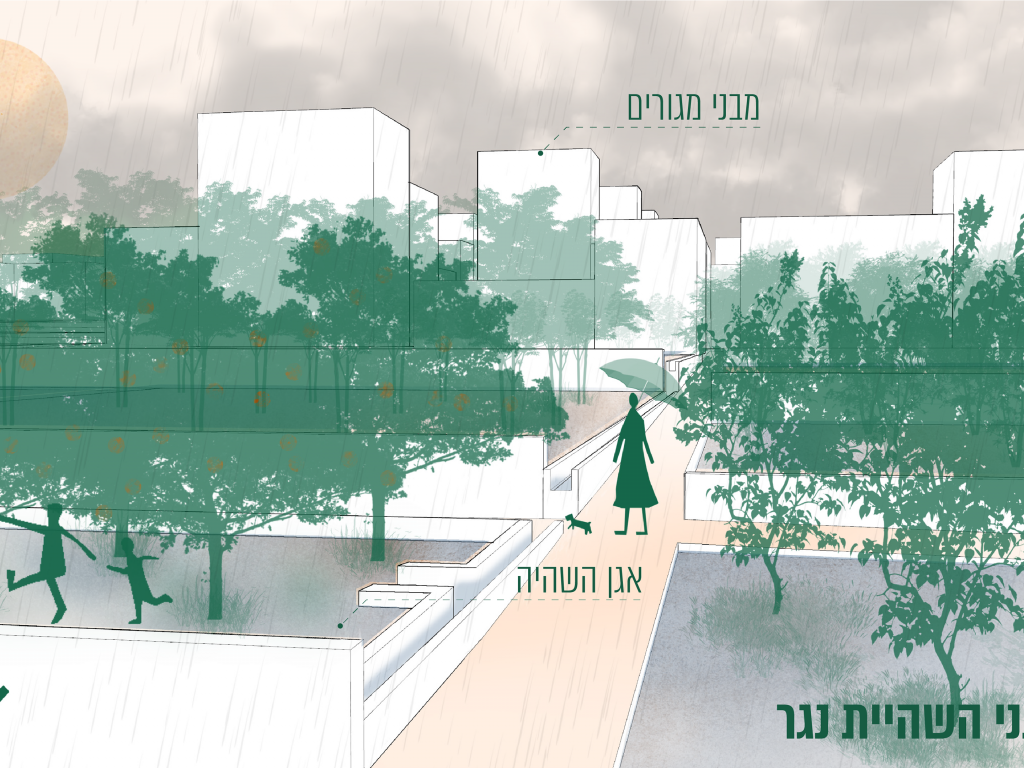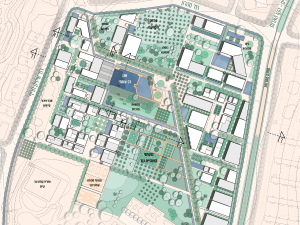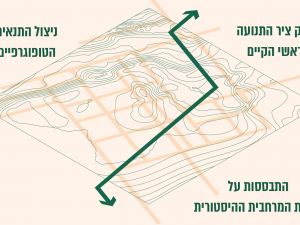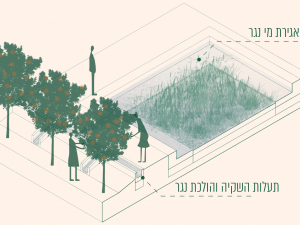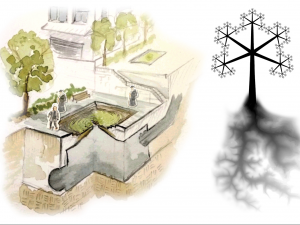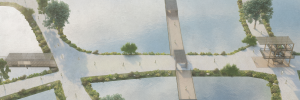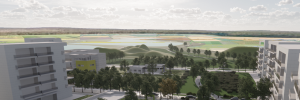Orange Season. Restoring the traditional orchards landscape as a flood management tool in a renewing urban environment Decca Orchard water basin – Jaffa
The citrus grove landscape dominated the area surrounding the city of Jaffa throughout the 19th century and first half of the 20th century, until it disappeared almost completely in a rapid process that replaced it with a modern urban fabric, mostly after the establishment of the State of Israel. Along with the emergence and prosperity of the traditional orchards in the Palestinian coastal plain and around Jaffa in particular, well houses (from Arabic: بيارة– bayara) were built in order to provide pumped groundwater, and a complex system of constructed water collection basins and local irrigation canals was created in and around the orchards and groves.
The southern Jaffa C neighborhood, established in former groves, began to surround the orchard of Decca clan, which is mostly privately owned, thus turning it into a rural enclave within an intense urban fabric with lower permeability. Over the years, the landscape of the groves and orchards that characterized the Decca clan’s lands was replaced by low-rise and temporary dwellings, and the compound, which is located in a topographic depression with no natural drainage outlet, was subject to flooding. To cope with the floods, an artificial drainage outlet was built in the early 2000s, stretching from the low point in the compound directly to the Mediterranean. Although it has partially alleviated the floods, it looks like as a scar in the heart of Decca Orchard.
The project proposes a restoration of the historic landscape of the orchards as a community hub for the residents of Decca Orchard, supplemented by the creation of a new built environment aimed at connecting to the surrounding urban fabric while also preserving some qualities of the existing fabric. The principles of water systems and spatial layout that characterized the well houses would be adopted as a multi-stage tool for runoff management: runoff water storage basins would be established in the courtyards; canals would carry the excess runoff from the basins through groves and orchards to the lowest point to form a body of water and a central focal point; and the existing artificial drainage conductor would function only as a hidden backup system in extreme precipitation events. This approach provides an opportunity to create a model for urban development that responds to the characteristics of the place and its past, while remaining attentive to present needs, addressing future climate challenges – and considering past social challenges.



